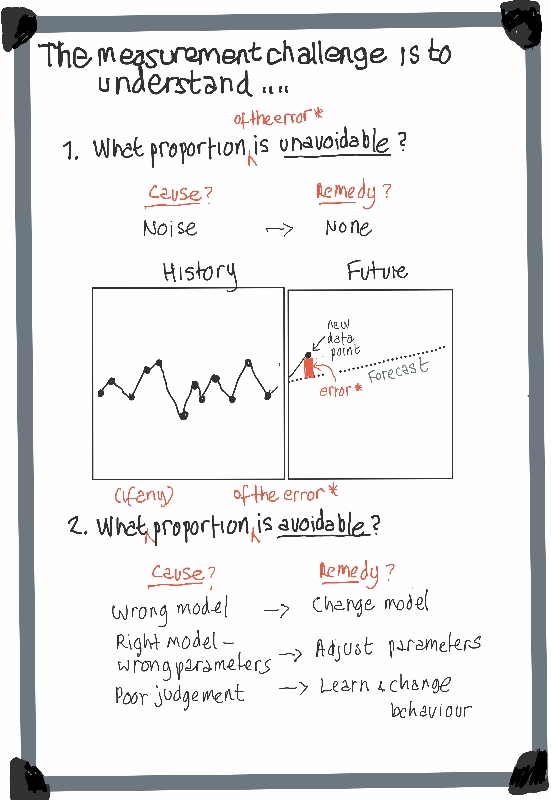 Note: Following is an eight-part serialization of selected content from Steve Morlidge's The Little (Illustrated) Book of Operational Forecasting.
Note: Following is an eight-part serialization of selected content from Steve Morlidge's The Little (Illustrated) Book of Operational Forecasting.
The measurement challenge
So here is the forecasters dilemma:
There will always have forecast error. The challenge is to work out the cause of the error and to take the appropriate action based on this knowledge. This means determining whether error is due to:
- The forecasting model being wrong - which would require it to be changed or recalibrated
- A temporary or permanent change in the behavior of the system being forecast – which might require a new model or for the existing one to be supplemented with judgement
- Noise – which cannot be changed, so the correct course of action is to do nothing
In practice, all these factors are jumbled up together and can vary enormously in size and impact.
Forecast error taken in isolation will never tell you how good a forecast is and what should be done to improve performance, because an unknown proportion of it will be unavoidable noise.
TAKEOUT
Don’t waste time on unavoidable error. The key to good forecasting is to work out how much error is avoidable, why and what to do to reduce it.
Coming Next: Good forecasts don’t always look right
People often interfere with forecast processes because they believe that they can tell how good a forecast is likely to be based on visual inspection…whether ‘it looks right’. This lesson explains why we cannot rely on our intuition.

